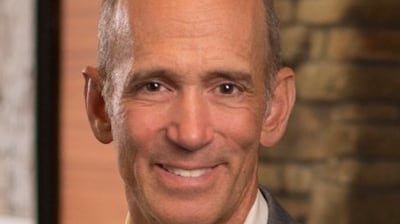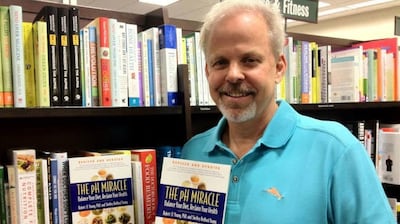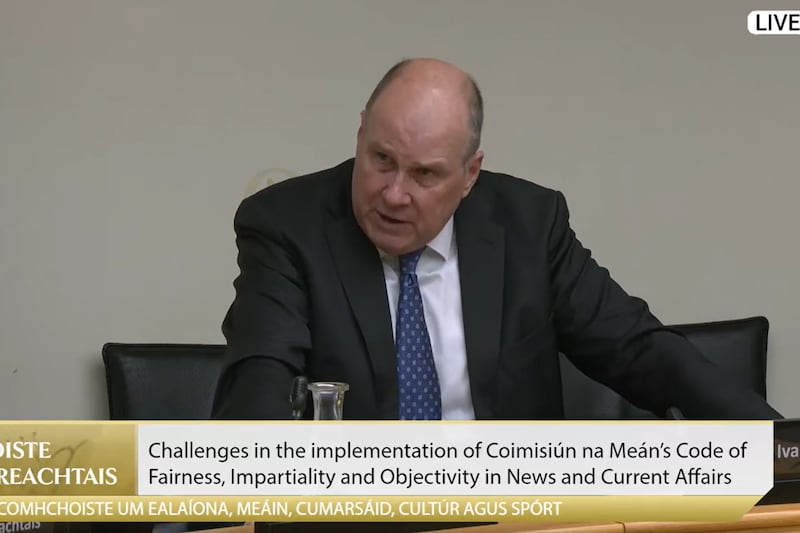For as long as people have fallen ill, there have been others only too keen to exploit them.
History is littered with charismatic hucksters and misguided fools eager to peddle useless elixirs and ineffectual trinkets for every manner of malady imaginable, from bear-bile to magnetic bracelets. The term “snake-oil” has become something of a catch-all term for any ineffective remedy, sold with a litany of empty promises. While the phrase itself conjures up images of 19th-century fairground shysters, the troubling reality is that we live in an era where snake-oil is more abundant than ever before. And it has never been more imperative that we are able to spot it.
The sheer ubiquity of odious cranks throughout the ages is exemplified by the abundance of terminology for such individuals, all with diverse etymology.
The French word charlatan dates from the 1600s, referring pejoratively to one who peddles a medicine with elaborate theatrics. "Quackery" is at least two centuries old, derived from the Dutch "quacksalver" – one who hawks salves. The term "snake-oil" itself originated in 1860s America, during the construction of the First Transcontinental Railroad. This massive undertaking linked Iowa to San Francisco, requiring over 3,000km of rail-track to be laid. This was backbreaking work, and pain afflicted the entire workforce. Among the labourers was a sizeable Chinese contingent, who relied on folk remedies for their aching muscles – including snake-oil.
Keen western entrepreneurs saw a market, and seized upon it, armed with elaborate theatrics and overwrought testimonials. Perhaps the most ludicrous of all was Clark Stanley, the self-proclaimed “rattlesnake king”.

Stanley appreciated the appeal of mysticism and the allure of antiquity. He concocted an elaborate cowboy backstory, claiming he’d learnt the secret from a Hopi Indian medicine man in exchange for teaching him shooting tricks. His audiences were not insubstantial – at the 1893 Chicago World Fair, Stanley wowed onlookers by killing snakes before their eyes, squeezing their bodies to eke out the precious liquid, which did a roaring trade.
This was a golden age for purveyors of nonsense, and Stanley boasted of having to kill more than 5,000 snakes a year just to keep up with demand. Of course, despite all the effusive hype, the product was completely devoid of efficacy. This didn’t matter to the snake-oil salesmen, who knew nobody could hold them to account.
But slowly, things were changing.
The middle of the 19th century saw medicine adopting the scientific method, and the root causes of disease began to be studied in a systematic way. Medicines finally became rigorously evaluated – by 1881, the Dutch had set up organisations to combat medical pseudoscience, becoming one of the first counties in the world to introduce governmental drug regulation. A tidal wave tide of fraudulent and dangerous cures led the American government to introduce the food and drug act in 1906, establishing the precursor body to the modern FDA. Finally armed legal and scientific methods to combat charlatanism, analytical chemists turned their attention to Stanley’s compound. Their probing found it consisted not of snake-oil, but rather somewhat less exotic materials; mineral oil and turpentine. Stanley was fined $20 for false advertising, fading into obscurity, but the phrase endures as a byword for quackery.
Perversely, while we live in an era of rapidly evolving medicine subject to strict regulation, snake-oil is more popular than ever. This is in part due to the perpetuation of misinformation online, replete with lofty testimonials and targeted advertisements – think of the emails that clutter up inboxes worldwide, offering potions promising to amplify the endowments of insecure men. But perhaps a bigger factor is the rejection of complex medical science in favour of more “natural” alternatives, like homeopathy, naturopathy and traditional Chinese medicine. Repeated testing in well-controlled trials have shown these treatments to be utterly useless, with the best that can be said for them being that they’re relatively benign.
But while these may be medically inert, this does not render them harmless. Natural practitioners are typically bereft of recognised medical training. As a result, they are prone to missing important signs, and prescribing completely inappropriate treatments for serious conditions. By way of illustration, the website whatstheharm.net lists just a sampling of tragic cases where patients succumbed to the gross ineptitude of alternative medical providers.
In addition, alternative medicine providers tend to be true believers in their modality, and studies to date indicate an alarming number harbour an open distrust of conventional medicine, including rejection of the scientific consensus on vital interventions such as vaccination. The prevalence of such attitudes and proliferation of dangerous advice risk hugely undermining public health.
Worse again, there is also plenty of snake-oil treatments which actively case harm. Miracle Mineral Solution (MMS) is an infamous example, an elixir touted by advocates as an incredible cure to everything from Aids to cancer. It is perhaps most commonly hawked as a “cure” for autism.
Needless to say, the allegedly miraculous liquid is completely useless for any of the conditions for which it is hyped. But despite a whimsical name, MMS is comprised of a more sinister agent: industrial bleach. Specifically, it is roughly 28 per cent sodium chlorite, which by itself is sufficiently toxic to induce renal failure and death in even small amounts. To exacerbate matters, users are advised to take MMS with an acidic compound, resulting in the formation of chlorine dioxide – a highly toxic bleaching agent.
One might be forgiven for thinking that no one would ever ingest such a corrosive substance, but sadly the allure of MMS is widespread. Its use has prompted dire warnings from health authorities the world over, from Canada to Australia, with children subjected to this treatment suffering severe internal injuries. In Ireland in 2016, a joint Garda-HPRA investigation revealed a number of autistic children being subjected to MMS both orally and rectally, leading to the conviction of an Irish supplier. MMS is the epitome of the darker side of snake-oil; not only does it lack any medical efficacy whatsoever; it is actively hazardous to human health. But like so much snake-oil, this seems to be no impediment to its popularity, with a quick web search revealing an abundance of glowing testimonials and dubious suppliers.
The sheer scope of modern snake-oil is staggering, from long-debunked ancient cures to pointless ointments and gadgets hawked with a superficial veneer of science to bamboozle the unwary. It’s perhaps no surprise to note that those who are especially vulnerable to pseudoscience are most frequently accosted by both misguided fools and odious charlatans. Cancer patients are especially vulnerable; social media and a slew of websites proclaim everything from cannabis oil to shark-fins to ketogenic diets as cures for cancer. The FDA maintain a list of over 187 known cancer scams patients should avoid, barely scratching the surface of the nonsense on offer.
To compound matters further, many of these ostensible panaceas are marketed in conspiratorial tones, alleging physicians and scientists are supressing the truth. Such claims are completely ridiculous, yet foist distrust towards the medical profession, driving some vulnerable patients away from their conventional treatment course and towards unfounded promises with tragic consequence.
Most of us only begin to research treatments once we or a loved one are diagnosed with a condition. The dark irony is that while the internet has put the entire wealth of human knowledge at our fingertips, it also facilitates the perpetuation of falsehoods further and faster than ever before. We are drowning in an avalanche of the misinformation and bogus treatments that lurk across the darker recesses of the internet, spread by the well-meaning but under-informed.
The truth is that in matters of health, it is often supremely difficult to differentiate myth from reality. There is simply no substitute for professional medical advice.
No matter how alluring, we must learn that for any alleged panacea, extreme scepticism should be our default position – our very well-being depends on it.
HUCKSTER EMPIRES
The market for unproven or debunked alternative medicines is a growing one, valued at more than €30 billion worldwide in 2015, and projected to reach up to €160 billion by 2025. Such a sizeable market lends itself to entire empires of pseudoscience.
Joseph Mercola runs one of the world's biggest alternative medicine sites, selling suspect supplements and therapies, including psychic medicine and magnetic healing. At least four of these "wellness products" have led to warnings from the FDA over illegal medical claims. Mercola's site also runs numerous anti-science articles, which are widely shared on social media, replete with dangerous scaremongering.

These include anti-vaccination pieces, and articles asserting bogus cancer causes and cures. Articles condemning conventional medicine, accusing the medical establishment of being a profit-making racket are frequently featured.
For all this apparent concern over the greed of "big pharma" however, the fact remains that peddling dubious cures is remarkably profitable, with Mercola making profits of $7 million (€5.7m) in 2010 alone. A damning review by Businessweek was exceptionally critical of aggressive marking and "lack of respect" for visitors, noting that "He is selling health-care products and services, and is calling upon an unfortunate tradition made famous by the old-time snake oil salesmen of the 1800s".
Mercola is far from the only figure turning an impressive profit from snake-oil.
Actor Gwyneth Paltrow is the owner of "lifestyle brand" Goop, a company that has been widely criticised by the scientific and medical professions for selling treatments without any medical efficacy, recognised as harmful by the medical profession.

These products are typically marketed at women with a household income above $100,000 (€81k), steeped in new-age jargon, quasi-Oriental philosophy and faux feminism. In 2017, Goop marketed the $66 (€54) “Jade Egg”, a form of vaginal weight-lifting with Nephrite “eggs”, alleged to “increase sexual energy, health, and pleasure”. Gynaecologists were exceptionally critical of the product, as the material used was porous and put women at risk of infection or toxic-shock syndrome. Despite criticism, these promptly sold out.
So frequent are Goop’s more outlandish claims, that US Consumer advocacy group Truth in Advertising has referred over 50 of these to government regulators. Even so, Goop saw revenue triple between 2015 and 2016, and raised over $10 million (€8 million) in venture capital.
FOOD FOR THOUGHT
Not even something as basic as food is immune to snake-oil claims.
Unlike registered dieticians who are qualified medical professionals, the term nutritionist is not subject to any registration across much of the world. As anyone can call themselves a nutritionist, the net result has been a deluge of wellness bloggers and self-appointed lifestyle gurus appropriating the term for commercial gain, dispensing copious amounts of dietary pseudoscience.
Human metabolism is inherently complex, and dietary scientists have long advocated a balanced diet – by contrast, food pseudoscience tends to present grossly simplistic narratives, either exalting or demonising particular food type, from protein to gluten.
Alkaline diets are especially popular in alternative medicine circles – these posit that cancer and heart-disease are caused by acidity (pH) and thus can be treated by ingestion of alkaline foodstuffs. In reality, bodily pH is regulated by our organs and not affected by diet. This is undoubtedly a good thing, as altering our tissue acidity would rapidly kill us. Despite being scientifically debunked, alkaline diets are heavily marketed online.
Naturopath Robert O Young is a prominent example of this particular quackery, with a lucrative string of books and courses to his name, raising to the lofty heights of having his alkaline cancer diet promoted on Oprah. He was convicted in 2016 of theft and practicing medicine without a licence after charging patients up to $50,000 for this bogus therapy.

By far the most popular dubious diet fad of the last few years has been the ketogenic diet for cancer, which claims eliminating carbohydrates can stave off or even cure cancer.
This stems from a cart-before-horse misunderstanding of cancer metabolism, roundly criticised by cancer scientists across the globe. Worse than being merely ineffectual, restrictive diets present a serious risk to patients with cancer, being strongly associated with negative prognosis.
In 2016, Irish restaurateur Domini Kemp and nutritional therapist Patricia Daly released a ketogenic cookbook, evangelising the diet for chronic disease, including cancer. Their claims were condemned by scientists and dieticians, but this was no impediment to the book becoming a best-seller.
The Irish Nutrition and Dietetic Institute and Irish Cancer Society subsequently filed a complaint to the Advertising Standards Authority pertaining to claims on Daly's website, including one offering a $497 web-course on ketogenic diets for cancer. These complaints were upheld by the ASAI.
– Dr David Robert Grimes is a physicist, cancer researcher and science writer at Queen’s University Belfast and University of Oxford.
















